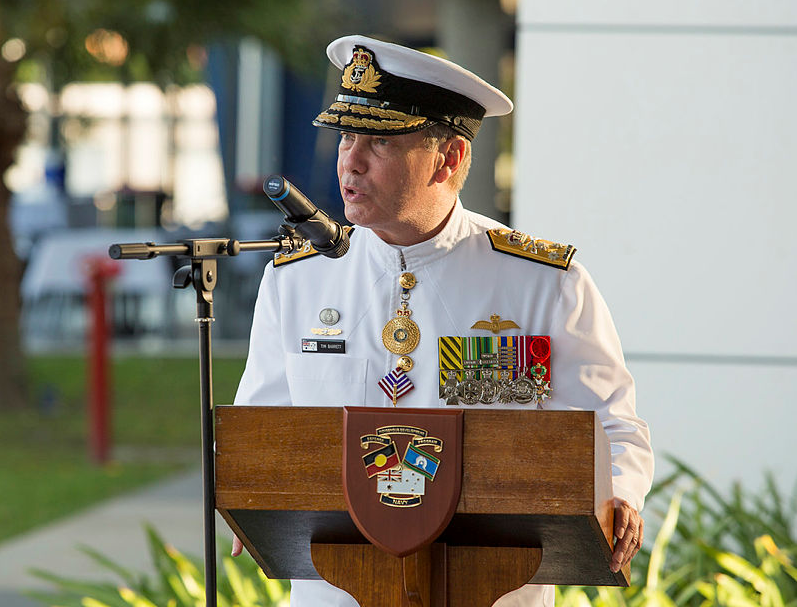Trucking in steel for the navy’s new ships
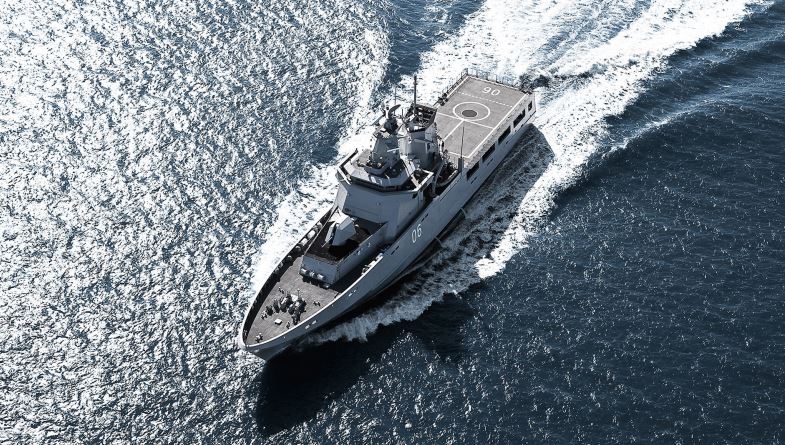
Steel for the Royal Australian Navy’s first offshore patrol vessel is being cut in Western Australia and trucked to Adelaide where construction is set to begin next week.
The vessel is the first of 12 OPVs based on the PV80 design of the German shipbuilder Lürssen. It’s one of two OPVs to be built at ASC’s Osborne shipyard. The remaining 10 vessels will be built in the Henderson yard of WA-based Civmec. The steel, from Australian mills, is cut by Civmec and taken by road to South Australia.
The 1,700-tonne OPVs, 80 metres long and capable of 22 knots, will ultimately replace the navy’s Armidale-class and Cape-class patrol boats, coastal minehunters and survey ships.
Lürssen chief executive Peter Lürssen told The Strategist that Australian officials had completed their review of the design, and assembly of the ships was on schedule for the promised mid-November start date. The first plates to arrive at the Osborne yard gate were those for the first ship’s double bottom, and truckloads would continue until Christmas, Lürssen said. ‘Because the OPV is only 80 metres, we build the whole length deck by deck. Because we don’t have to cut steel, we can put more people onto assembly so that helps get more people into work earlier.’
The first OPV is scheduled to be launched in Adelaide in the first quarter of 2021.
Lürssen rejected concerns that Civmec has not built ships previously. ‘They are very well trained and equipped for steel construction. If you go to their headquarters, interestingly enough, you can see a section of a submarine they built to demonstrate how good they are. This is really good quality. They have done fantastic work in steel.’ That included structures designed to function under great pressure in very deep water.
‘They know what this is all about. The rest is a skill base that we will develop together.’
The Henderson area, south of Perth, had a strong shipbuilding history, so Lürssen was confident of finding enough expert personnel for the OPV project. Australian engineers would be taken to the company’s yards in Germany to gain further experience in design and construction.
Lürssen said he was happy with the relationship that was developing with ASC. ‘Everything’s scheduled and on track. We have full agreement on price, terms and conditions. It took a little longer than with others, but that, I think, is understandable because ASC is not in an easy position.’ ASC, he said, was in the midst of a reorganisation and plant construction. ‘I’ve seen this happen to other companies and it was more complicated. So everything’s on track there.’
Building two ships in South Australia and the other 10 in WA was not a big issue, Lürssen said.
‘It’s all possible, and it’s not complicated as long as you know the distribution of the work early on in the contract. And it was always made clear to us that two will be built in Adelaide, and then 10 in WA. And this was easy because when you start in the beginning, you can plan for it.’
The split build is intended to keep the South Australian shipbuilding workforce employed in the time between the end of construction of the navy’s three air warfare destroyers and the start of work on nine new frigates.
During the competition for the OPV contract, Lürssen raised the prospect of exporting naval vessels from WA, so how realistic was that?
‘Absolutely. We are talking to a number of countries already—and we are actively promoting Australia as the builder.’
Lürssen had already been talking to the Philippines about the possibility of building six OPVs for its navy. Discussions were also underway with two other countries, but it was too early to name them at this stage, Lürssen said. ‘When you talk to a client, then you are in a front-running position. You don’t want to share that information with others.
‘A chicken should only make noise when the egg is there and not way before that. So you will hear us talk about things when we’ve got things to say.’
He said his company was one of five or six from Australia and abroad which had responded to a request for information about the project from the Philippines navy.
‘We clearly made the case that a number of ships need to be built in Australia to familiarise the Philippines people with the build techniques, and then they can continue the contract in the Philippines.’
Lürssen said his company would have the resources to run two such projects simultaneously. It won the Australian competition on technical quality and overall performance, so of course it was hopeful, he said. ‘We will put our best effort forward together with our Australian partners to win the competition.’
WA-based Austal has already shown strong interest in the Philippines contract and Lürssen said the other companies involved came from Britain, Italy and South Korea.
The OPVs will undertake what the navy refers to as ‘constabulary missions’ and maritime patrols and they are intended to be ready to respond quickly to emergencies.
They’ll be equipped with state-of-the-art sensors and command and communication systems that will allow them to operate alongside Australian Border Force vessels, other Australian Defence Force units and vessels of regional partners.

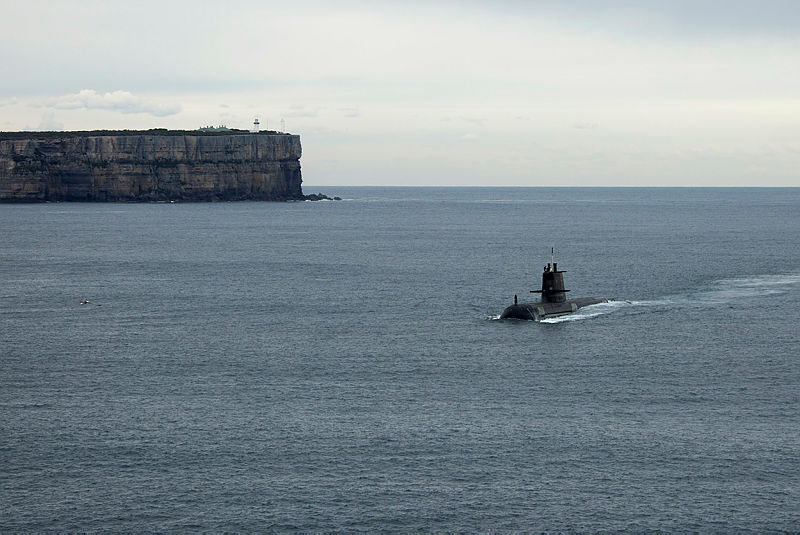


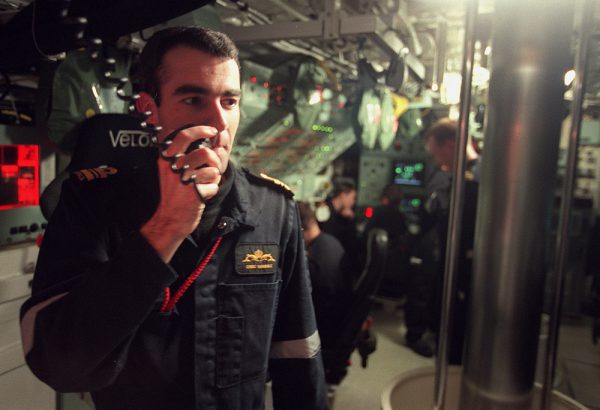

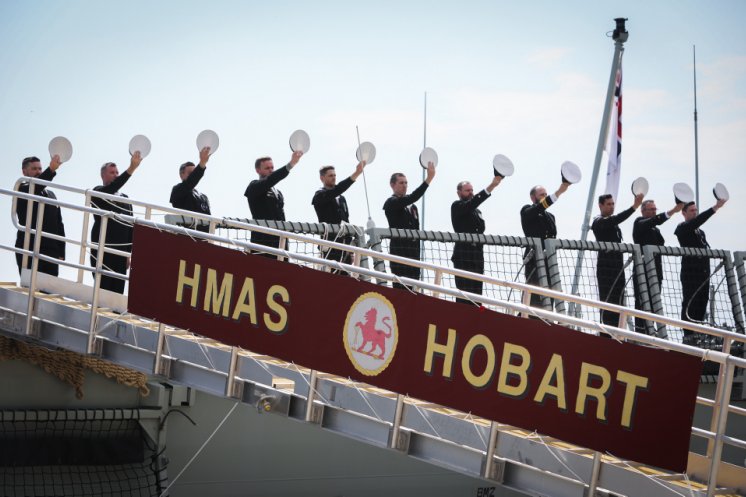
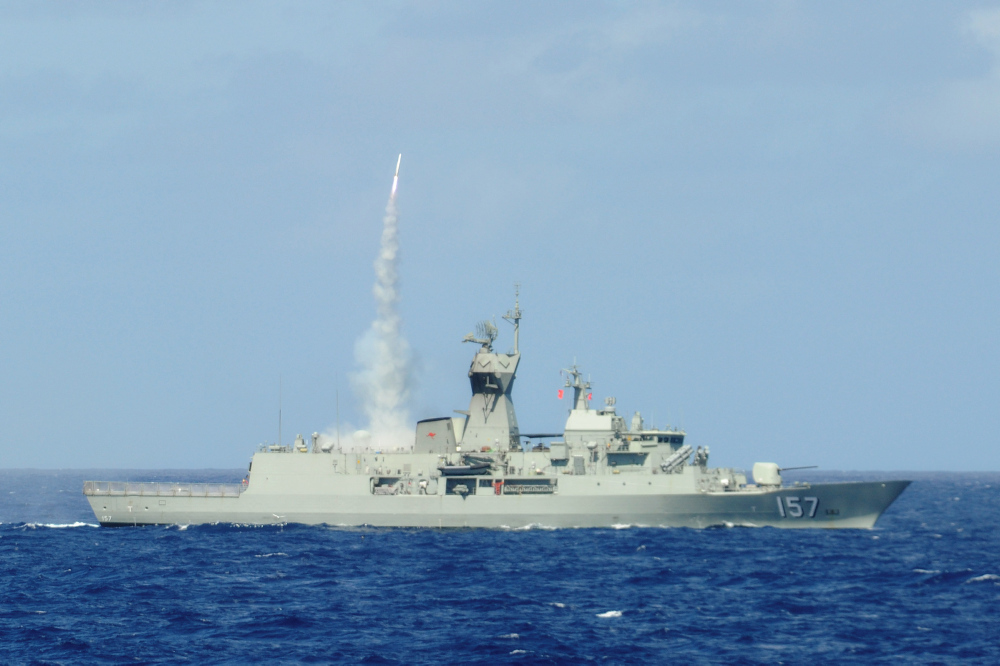 The Australian government is about to deliberate on the combat management system (CMS) for the navy’s future frigates. In the mix are Saab Australia’s 9LV, which is already working well on the RAN’s Anzac class frigates, and the US Navy’s Aegis system, a version of which is in the Hobart class air warfare destroyers (AWDs) that are now starting to enter service.
The Australian government is about to deliberate on the combat management system (CMS) for the navy’s future frigates. In the mix are Saab Australia’s 9LV, which is already working well on the RAN’s Anzac class frigates, and the US Navy’s Aegis system, a version of which is in the Hobart class air warfare destroyers (AWDs) that are now starting to enter service.
